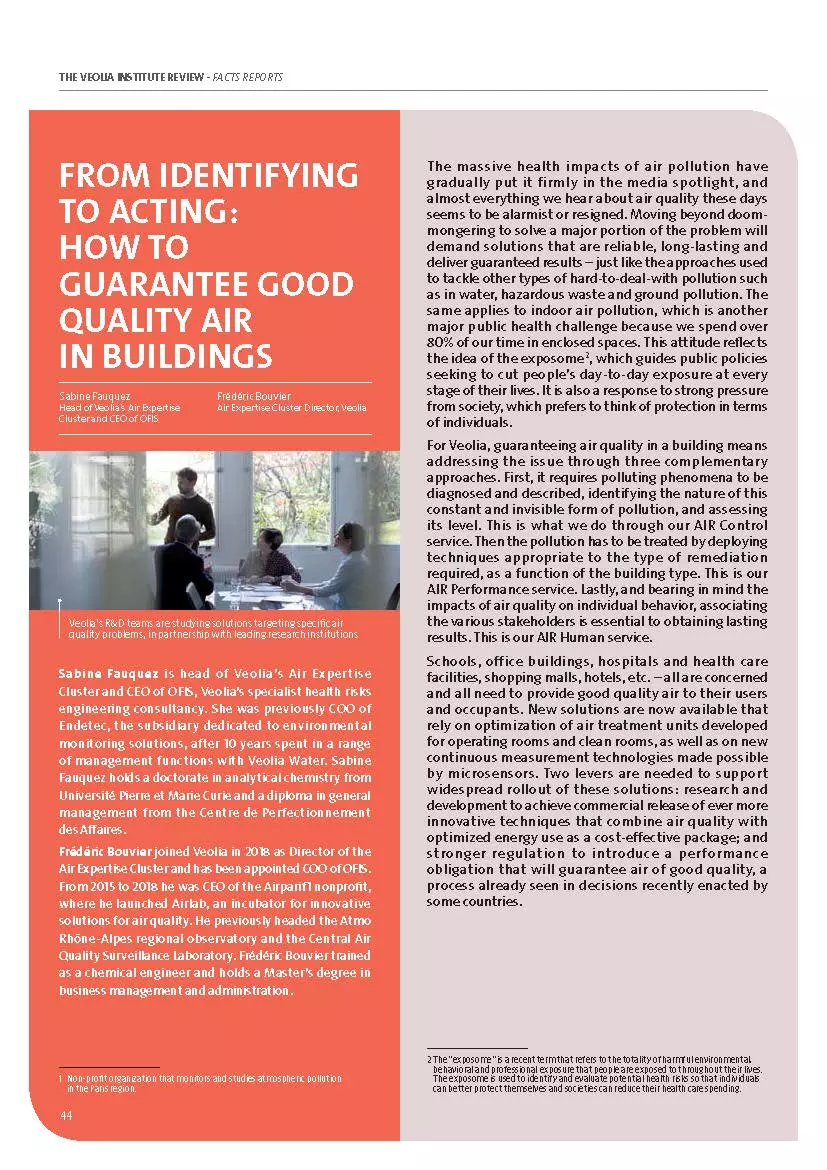Sabine Fauquez
Head of Veolia’s Air Expertise Cluster and CEO of OFIS
Frédéric Bouvier
Air Expertise Cluster Director, Veolia
The massive health impacts of air pollution have gradually put it firmly in the media spotlight, and almost everything we hear about air quality these days seems to be alarmist or resigned. Moving beyond doommongering to solve a major portion of the problem will demand solutions that are reliable, long-lasting and deliver guaranteed results – just like the approaches used to tackle other types of hard-to-deal-with pollution such as in water, hazardous waste and ground pollution. The same applies to indoor air pollution, which is another major public health challenge because we spend over 80% of our time in enclosed spaces. This attitude reflects the idea of the exposome2, which guides public policies seeking to cut people’s day-to-day exposure at every stage of their lives. It is also a response to strong pressure from society, which prefers to think of protection in terms of individuals.
For Veolia, guaranteeing air quality in a building means addressing the issue through three complementary approaches. First, it requires polluting phenomena to be diagnosed and described, identifying the nature of this constant and invisible form of pollution, and assessing its level. This is what we do through our AIR Control service. Then the pollution has to be treated by deploying techniques appropriate to the type of remediation required, as a function of the building type. This is our AIR Performance service. Lastly, and bearing in mind the impacts of air quality on individual behavior, associating the various stakeholders is essential to obtaining lasting results. This is our AIR Human service.
Schools, office buildings, hospitals and health care facilities, shopping malls, hotels, etc. – all are concerned and all need to provide good quality air to their users and occupants. New solutions are now available that rely on optimization of air treatment units developed for operating rooms and clean rooms, as well as on new continuous measurement technologies made possible by microsensors. Two levers are needed to support widespread rollout of these solutions: research and development to achieve commercial release of ever more innovative techniques that combine air quality with optimized energy use as a cost-effective package; and stronger regulation to introduce a performance obligation that will guarantee air of good quality, a process already seen in decisions recently enacted by some countries.



